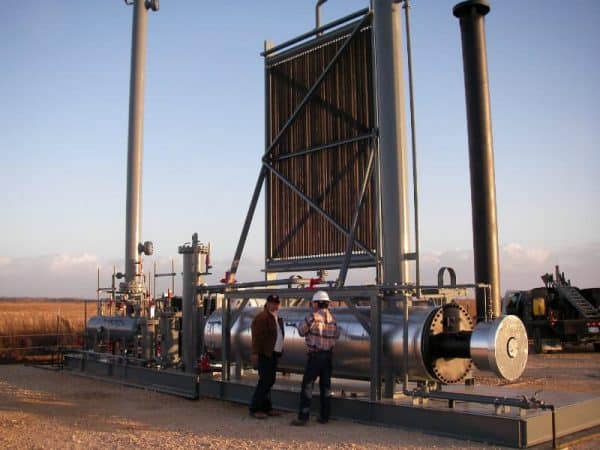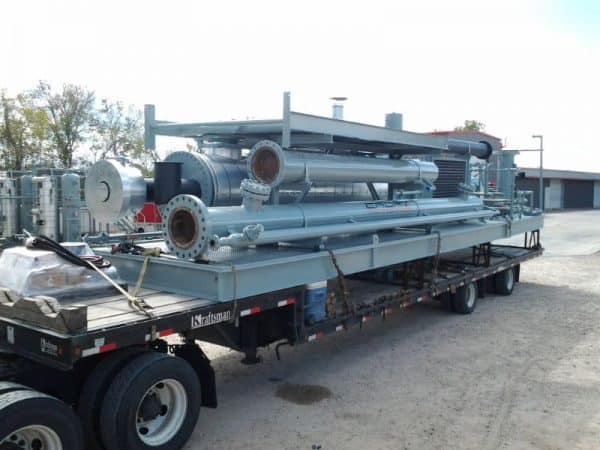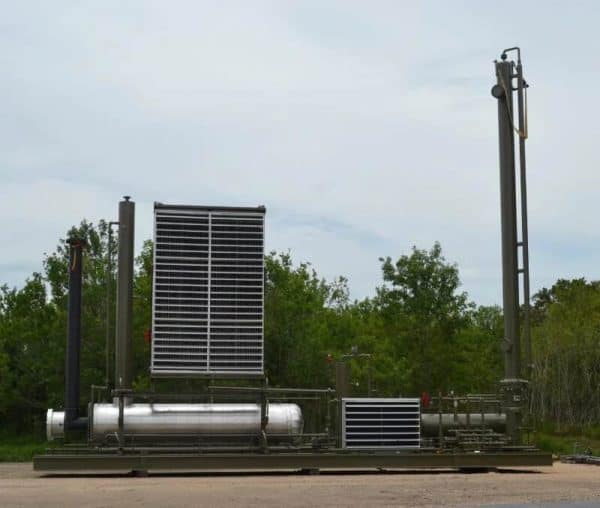
CROFT Gas Sweetening Systems (GSS), also known as Amine Plants, safely remove H2S and CO2 from the gas stream to low levels that meet pipeline specifications. CROFT designs and manufactures gas-sweetening amine plants with rates of up to 10 GPM of amine. Using the parameters for your particular gas stream, we will design the most efficient system to handle your specifications. CROFT will be there every step of the way with the design, manufacture, assembly, start-up, and troubleshooting of any operational issues that involve the Gas Sweetening System. Below are the answers to our client’s most frequently asked questions about our GSS:
What is The Minimum Pressure Needed For a CROFT Amine Plant?
In CROFT standard designed plants, we utilize Kimray 450 pumps which the manufacturer requires 400 PSI. If the pressure is lower, then we recommend utilizing a back-pressure valve on the tower to increase pressure or you can upgrade to electric pumps if your location has power.
How Much Chemical does a CROFT Amine Plant Use?
The plants utilize two major chemicals, amine, and deionized water. Amine (Just amine, not water too) losses will average 2-3 lbs/MMscf. Normal water losses vary by the inlet gas conditions and the amount of gas heating in the contact tower but are much higher than the amine losses. Some plants can lose up to 100 lbs/MMscf under normal operations. Water losses are higher because of boiling out and entrainment in the waste stream acid gas line. NOTE: high losses due to carryover because of foaming, pressure swings, and volume swings may occur.
How do you dispose of the Amine?
The proper Amine disposal will vary with location. Contact your local carrier.
How are CROFT Amine Plants Transported?

The amine plants are built in a rugged, all-in-one package on a single skid to allow easy transportation and installation to decrease delivery and setup time greatly.
What is the Advantage of a CROFT Amine Plant?
CROFT Amine plants can also be utilized in split stream applications to treat greater volume amounts of H2S and CO2. Therefore, if the well stabilizes and decreases in volume over time and requires fewer gallons of amine circulation, the excess plants can be removed. This method allows the client to treat only what is specified and avoid having oversized assets in their locations.
Due to the detrimental effects that H2S and CO2 have, pipeline companies have in place that prevent acid gas or gas with high amounts of H2S and CO2 from being put into the pipeline. Learn more about acid gas and how to remove acid gas in our other blogs.
Learn more about CROFT Gas Sweetening Systems or Request a Quote.












